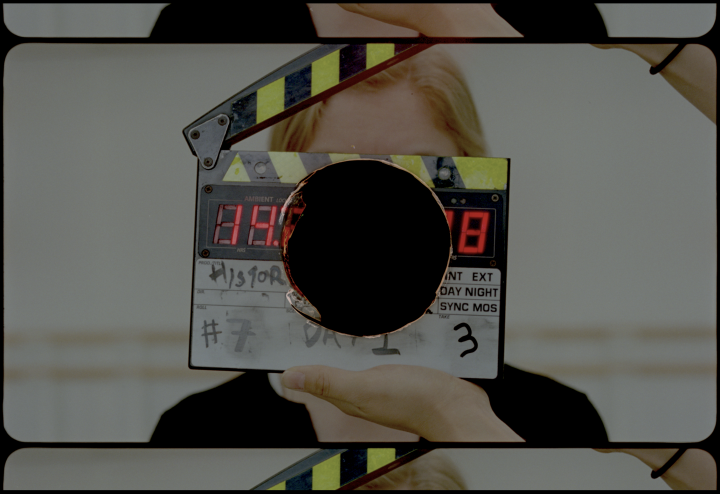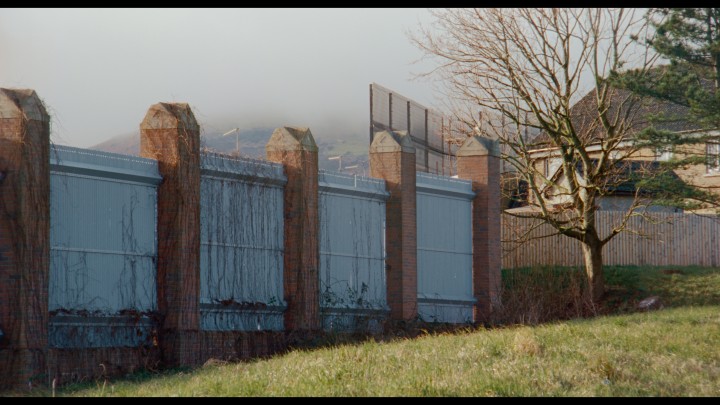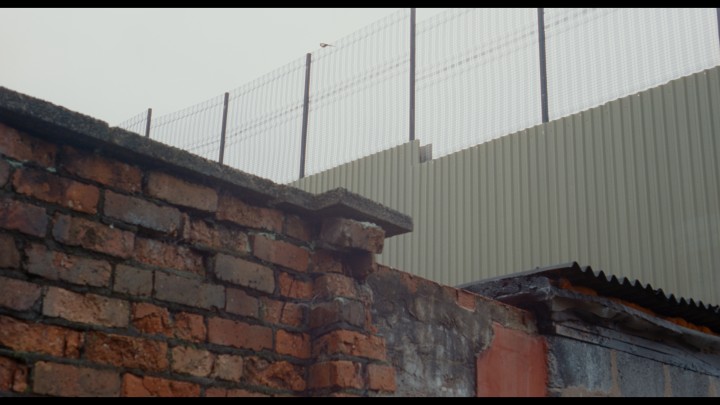Scottish Art News
Latest news
Magazine
News & Press
Publications
Art Night: History of the Present
By Gemma Batchelor, 14.06.2023

A key part of this summer’s Art Night programme is the experimental opera-film ‘History of the Present,’ written by Maria Fusco and co-directed with Margaret Salmon. The film foregrounds Belfast working-class women’s voices to ask: who has the right to speak and in what way? Layering sociological, cultural, and political themes from Northern Ireland’s recent past, the directors collaborated with composer Annea Lockwood and singer Héloïse Werner on a range of film and operatic techniques to amplify marginalised stories.
Gemma Batchelor meets Maria Fusco and Margaret Salmon to discuss the work and what brought them to this experimental opera-film format.
Gemma Batchelor (GB): What can you say about how this project came about and when did you first conceive of it?
Maria Fusco (MF): I'm from a working-class area in Belfast and grew up beside a peace line. Having previously been commissioned to work on a documentary called ‘Along the Peace Lines’, I felt that there was a lot more to do around that in terms of deeper critical and creative thinking. And I had this idea that working class voices and Northern Irish accents would sit very well within opera. I felt that the power of the operatic, with its register of emotion and the complexity held within short phrases, felt very palpable for discussing Belfast.
Margaret Salmon (MS): I was very interested and excited when Maria approached me about making this work together. It sounded like a dream, an opera film is such a brilliant form to work in, but I was also aware of the sensitive nature of the opera’s themes and the challenges of working in various registers with love and care. I began thinking about how we might work collaboratively, but then also what kind of images I would be building into it as part of my function as a cinematographer.
 Maria Fusco and Margaret Salmon. History of the Present, 2023.
Maria Fusco and Margaret Salmon. History of the Present, 2023.
MF: Regarding the form of the work as an opera-film, it is an interdisciplinary mixing of two words. Opera is very expensive to stage and it's very expensive for folk to come and see and that felt like an unnecessary limitation on experiencing the work. Of course, there are lots of creative decisions behind the choice of an opera film too, alongside the pragmatism around collaboration and feminist ethics, so access felt important.
MS: And regarding the choice of 35mm film: it doesn't shift except for the audience around it, but it does reanimate a present for audiences in a way that felt intrinsic to our approach, to our critique of representations and histories that had already been circulated from that time. And I think there's also something interesting about the concept of the opera as an emotional template with a huge range, which means there’s opportunity to think where you can push those elements in film. In a staged opera, there's a physical proximity to the performer that is defined by stage and audience. But in making this opera film, we cultivated an optical closeness and camera subjectivity whilst also shifting temporalities and realities.
GB: That brings us nicely on to talking about visual choices. What can you say your visual choices and the use of 35-millimetre film?
MS: Through my own research in and about Belfast and conversations with Maria, I learned that there's a visual language that's deeply embedded in the political history. And this pre-existing visual code needed to be navigated with consideration and care. For me, the visual strategy was about trying to see or show Belfast through generalised eyes and to enter it in without specific political intention – as in showing or looking rather than telling. And so, a lot of the camerawork was a process of searching without expectation, and these sections about surveying can be read in all different ways. They could be read as a critique of surveillance and military occupation; or as an embodiment of a kind of trauma or an experience of not being grounded or your reality being shifted. Or it could just be about searching for some sort of connection or meaning within the urban landscape.
Working on 35mm film, Maria and I spoke about treating the film material as a body, as something that we're interacting with, caring for, creating. In terms of the material itself, there are multiple opportunities to explore the analogue medium. We used various techniques like layering multiple exposures, split screen or burning into the film, which is the body of the film itself. That is a really effective way of complicating representation for audiences in a way that they might not necessarily register what's happening.
Moving on from talking about visuals, I’m interested in the difference between the visuals and sound elements created and used in the film.
MF: We discussed using visual archival material quite a lot at the beginning of the project and looked at personal as well as community archives. But we became aware of the codification that exists already within historic images and that really wasn't what was of specific interest in this work. So, we made a decision to not include any visual archival material, but we would include sonic archival material.
 Maria Fusco and Margaret Salmon. History of the Present, 2023.
Maria Fusco and Margaret Salmon. History of the Present, 2023.
The History of the Present premieres on the 24th June at Art Night in Dundee, in the year of the 25th anniversary of the Good Friday Agreement https://artnight.org.uk
The work will then tour to the Edinburgh Art Festival 11th – 27th August https://www.edinburghartfestival.com




